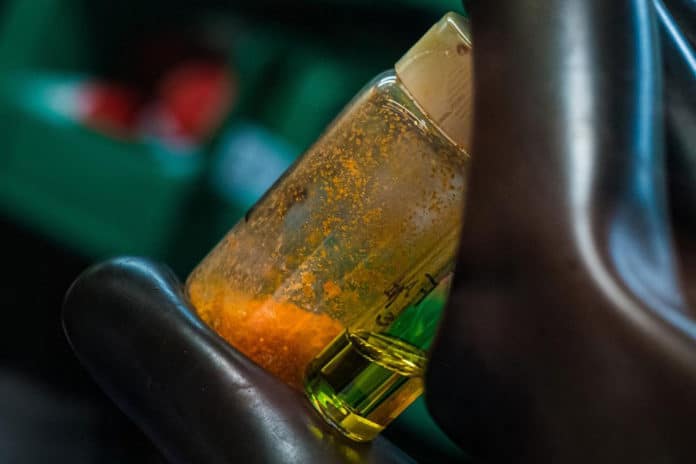Rice University engineers have created microscopic seeds for growing remarkably uniform 2D perovskite crystals that are both stable and highly efficient at harvesting electricity from sunlight.
Halide perovskites are organic materials made from abundant, inexpensive ingredients. Rice’s new seeded growth method addresses both performance and production-related issues that have held back halide perovskite photovoltaic technologies.
The new process has allowed the chemical engineers at Rice’s Brown School of Engineering to make the seeds and use them to grow homogenous thin films comprised of uniformly thick layers. These thin films can be used in highly efficient optoelectronic devices like high-efficiency solar panels.
In a laboratory test, photovoltaic devices made from the films proved both efficient and reliable, a previously problematic combination for devices made from either 3D or 2D perovskites. Engineers claimed the state-of-the-art efficiency for the 2D case of 17% without optimization. They believe efficiency can be improved in several ways.
The seed-grown, high-efficiency photovoltaic films were reported to have preserved more than 97% of their peak efficiency after 800 hours under illumination without any thermal management. In previous research, 3D halide perovskite photovoltaic devices have been highly efficient but prone to rapid degradation, and 2D devices have been inefficient but long-lasting.
In the seeded growth method, seeds are made by slow-growing a uniform 2D crystal and grinding it into a powder, which is dissolved into a solvent. The seeds contain the same ratio of ingredients as the traditional recipe, and the solvent is then spin-coated onto disks exactly as it would be in the original perovskite-yielding method. The evaporation and crystallization steps are also identical. But the seeded solution yields films with a homogeneous, uniform surface, similar to the material from which the seeds were ground.
While seeded growth has often been demonstrated for inorganic crystals and other processes, the researchers said this is the first time it’s been shown in organic 2D perovskites. The process is often attempted and rarely achieved in nanomaterials research – a self-assembly method to make macroscopic materials that live up to the promise of the individual nanoparticles of which they are composed.
“This is really the bane of nanomaterials technology,” said Aditya Mohite, an associate professor of chemical and biomolecular engineering and of materials science and nanoengineering at Rice. “At an individual, single element level, you have wonderful properties that are orders of magnitude better than anything else, but when you try to put them together into something macroscopic and useful, like a film, those properties just kind of go away because you cannot make something homogeneous, with just those properties that you want.”
“We haven’t yet done experiments on other systems, but the success with perovskites begs the question of whether this type of seeded approach might work in other systems as well,” he said.
